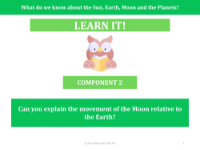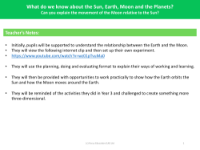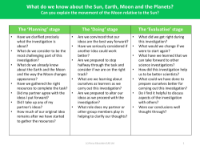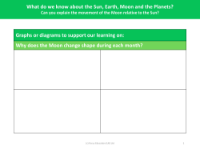Earth, Moon and Sun - Info pack
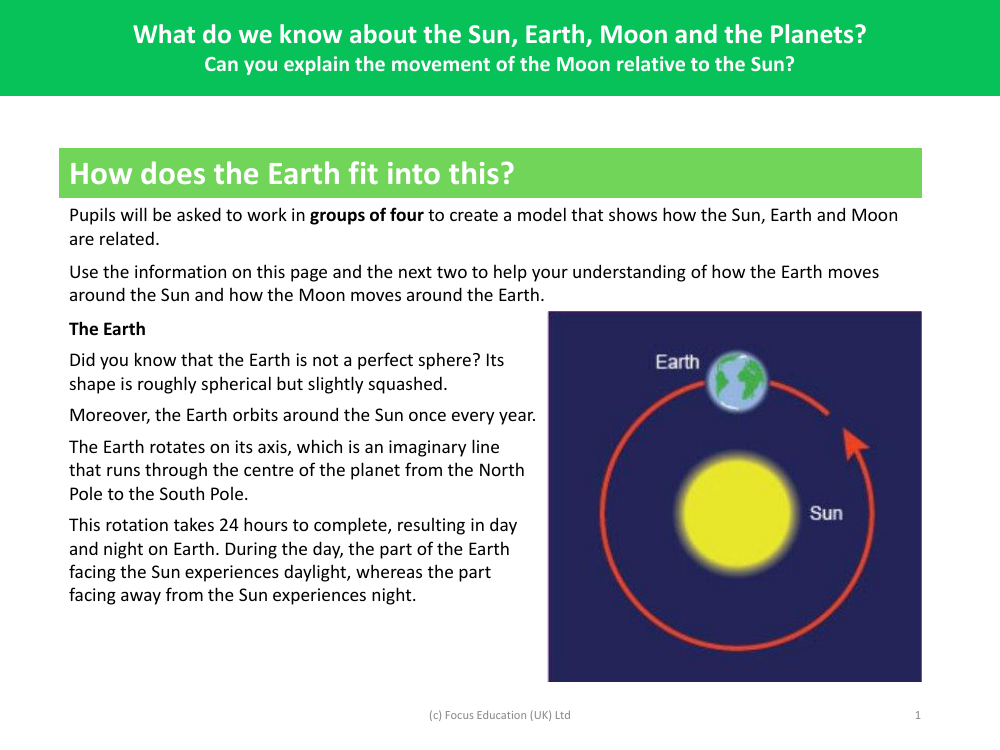
Science Resource Description
The Earth, our home planet, is an almost spherical entity, though not perfectly so; it's slightly flattened at the poles. It is part of a vast celestial dance, orbiting the Sun annually along an elliptical path. Simultaneously, the Earth spins around an imaginary line called its axis, which stretches from the North Pole to the South Pole, taking 24 hours to complete a full rotation. This rotation is the reason we experience the alternating cycles of day and night – with daylight gracing the side of the Earth that faces the Sun, while darkness envelops the side turned away.
Our natural satellite, the Moon, is a smaller spherical body that travels around the Earth, taking approximately 28 days to complete an orbit. The Moon does not emit light of its own; instead, it acts like a mirror, reflecting sunlight, which is why we can see it shining in the night sky. The portion of the Moon that we see illuminated varies depending on its position in relation to the Sun and Earth. Understanding the intricate relationship between the Earth, Moon, and Sun is essential, and pupils are encouraged to create a model to visually represent this celestial system, enhancing their grasp of the movements and interactions of these astronomical bodies.


